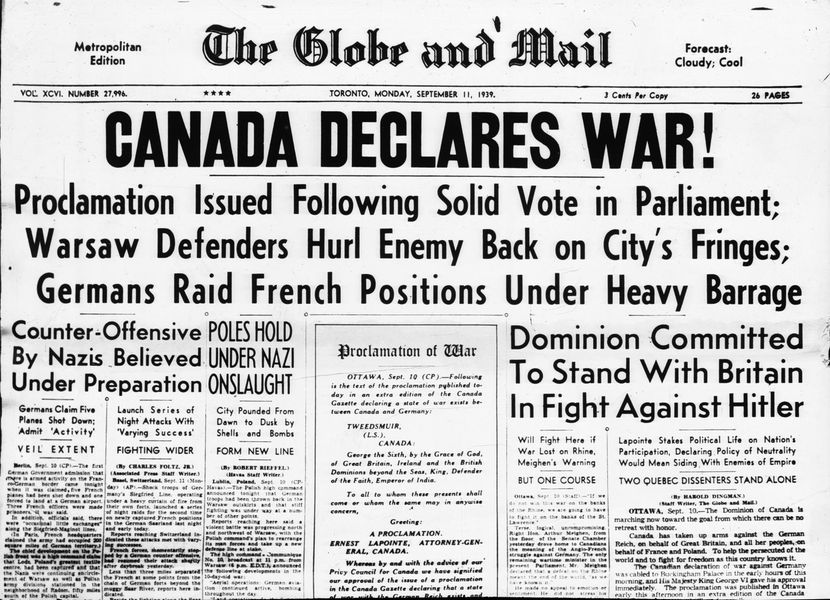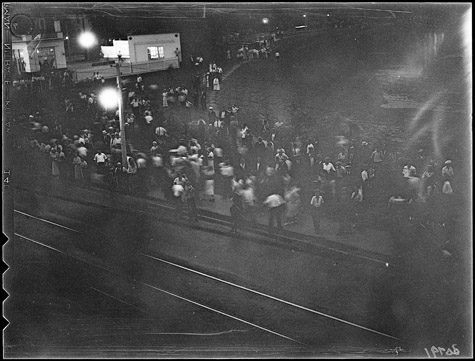Module 5: Memory and the Holocaust
1. Canada and the Holocaust

In order to start understanding the Holocaust within the Canadian context, this section begins with Dr. Hernan Tesler-Mabé’s lecture on Canada’s involvement in the Second World War. After viewing Dr. Tesler-Mabé’s lecture, learn about the Christie Pits Riot and the intensification of ethnic divisions in 1930s Canada by watching the video entitled, The worst anti-Semitic riot in Canada. Dr. Tesler-Mabé’s lecture will allow you to reflect on the Canadian perspectives of this history as well as on the Jewish-Canadian war effort. In the section of this lecture on Canada and the MS St. Louis, you will learn further about the history of this ship and its passengers through the words of Annette Wildgoose as she recounts the experience of her mother, Alice Meister.
Canada’s War
In this lecture, Dr. Hernan Tesler-Mabé unpacks the complex story of Canada’s involvement in the Second World War and how Canadians, both Jewish and Gentile, came to understand the connections between the war and the Holocaust.
| “Let’s Go…Canada!” recruitment poster by Henry Eveleigh, 1942, Poster 19, Wiener Holocaust Library. Propaganda poster of a young Canadian soldier holding a rifle with bayonet and standing in front of the Union Jack flag. | Qu’ils ne leur touchent pas! Achetez des obligations de la victoire by Gordon K. Odell. Image: 0003305401. Bibliothèque et Archives Nationales du Québec, https://collections.banq.qc.ca/ark:/52327/2012270. Propaganda poster of a young woman holding an infant with the looming threat of Nazi Germany and Japan represented as claws. |

Christie Pits Riot
The Christie Pits Riot took place in the like-named neighbourhood in Toronto, Ontario on the evening of August 16, 1933. The image above is the only known photograph of the violence that initially broke out in the Christie Pits Park during a game between the Jewish Harbord Playground and St. Peter’s baseball teams; however, it quickly escalated into a much larger confrontation between Jews, in addition to other immigrant groups, and Anglo-Canadians, many of whom were members of the infamous Swastika Clubs that made headlines in the city’s newspapers earlier that month. The riot itself was the result of animosities between Toronto’s diverse ethno-religious populations, namely Jewish-Canadians and Anglo-Canadians, that had steadily built over the course of the summer of 1933, ultimately erupting in a violent encounter involving nearly 10,000 residents.
The worst anti-Semitic riot in Canada
Today, we think of Canada as a multicultural space. This vision of Canada is, however, built upon a myth of the peaceful coexistence of different ethnic groups and communities. The Christie Pits Riot of August 16, 1933 very clearly reveals the ethnic cleavages that one can see in Canada’s past and present. Watch the following video and see if you can understand why such an enormous altercation broke out. Why did such a fractious event occur?
Produced by Bonfire Originals. Scriptwriter and consultant Jamie Michaels. Based on the graphic novel “Christie Pits” by Jamie Michaels & Doug Fedrau. This project has been made possible in part by the Government of Canada.
This kind of anti-Jewish violence was, however, not a new phenomenon within Canada. Poet Irving Layton recalled similar episodes of violence while growing up Jewish in Montreal during the 1920s:
The strongest memory I have is of clashes. Around Easter … something seemed to happen to the gentiles. They took it as a cue to come and beat up on the Jews. So, without fail, every Easter, they would descend on the embattled Jews with bottles and bricks, and we’d be waiting for them on the roofs, like an army, with sticks, and stones, with anything. —Poet Irving Layton
Quoted in: Ira Robinson. A History of Antisemitism in Canada. (Waterloo, Ontario: Wilfrid Laurier University Press, 2015), 60.

